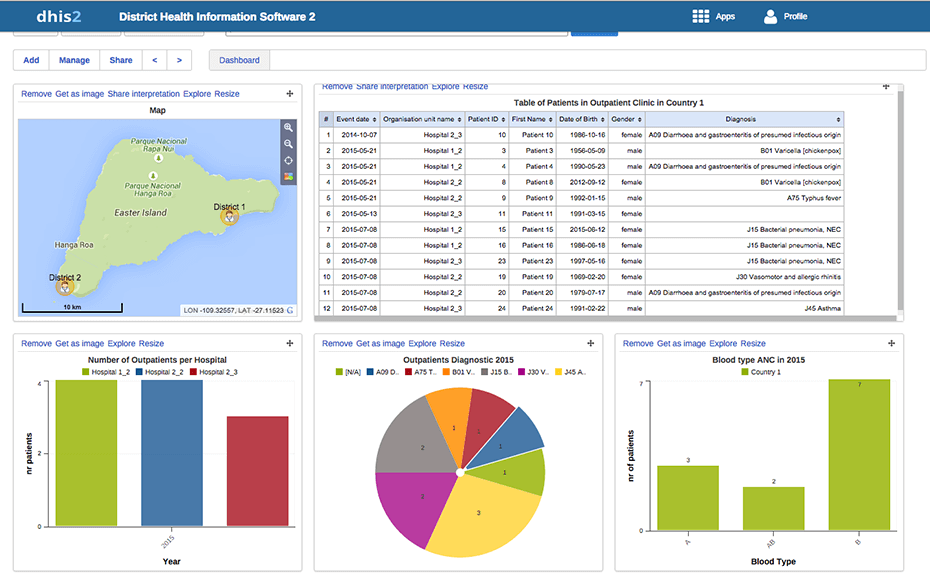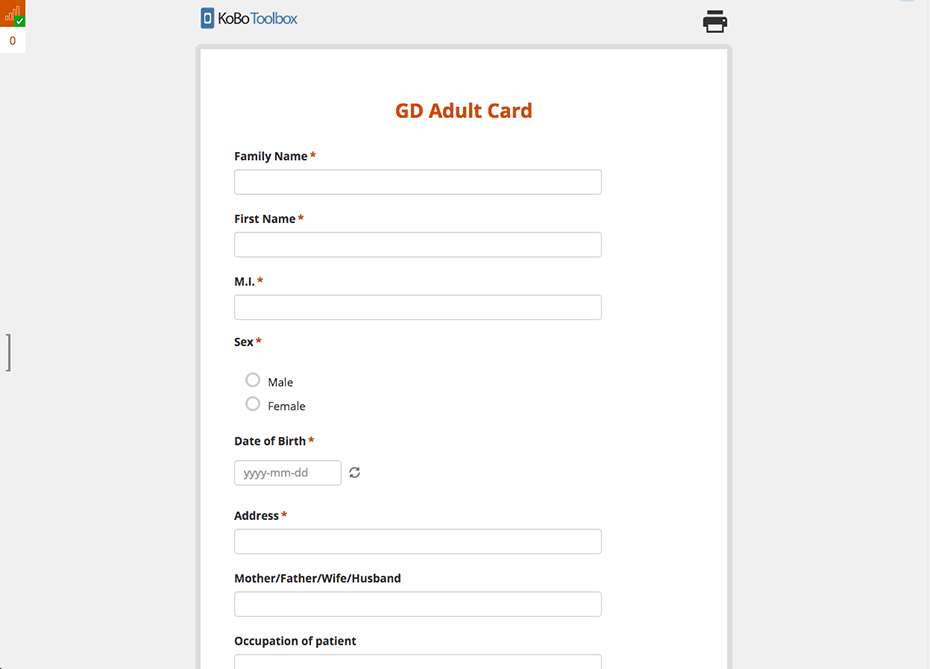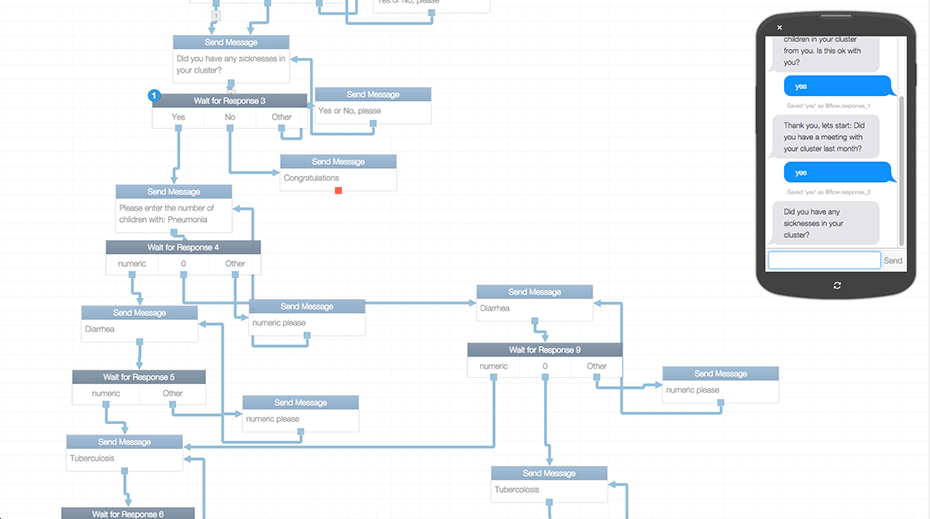Health Information Management
Key features
- Upload files into folders
- Upload images in different formats and view them via a web-image viewer
- Share files with individual users or user groups
Three health information management tools are accessible through SATMED platform for data collection and analysis:
These tools provide a wide spectrum of options for data collection and analysis since they are differentiated in terms of overall complexity, data acquisition mechanisms and statistics features.
Furthermore, SATMED’s preferred use of non-licensed softwares reduces costly implementation and maintenance, and thus contributes to a low cost and affordable structure for its partners.
DHIS2
Key features
- Create data entry forms for:
- Collection of medical data
- Analysis of collected data
- Facilitate DHIS2 use via its versatile channels (possible use on both computers and mobile devices)
- Broaden DHIS2 channels by combining it with SMS messaging
The Distric Health Information system (DHIS) allows users to collect and manage health related data for several different objectives such as:
- monitor and survey their work,
- create patient registries,
- perform surveys,
- conduct health studies.
SATMED integrated DHIS2, the updated version of DHIS, in order to support its use by a large international community in many different projects worldwide.
The solution covers 4 types of data:
- aggregated routine data,
- semi-permanent data (e.g. staffing, equipment, infrastructure, population estimates),
- survey/audit data,
- certain types of case-based or patient-based data (for instance, disease notification or patient satisfaction surveys).
What users say about DHIS2: “One of the many advantages with DHIS2 is that you can send health data even from places with no fixed-network telephony or Internet. Simple cell phone access is enough.”

User manual
KoBoToolbox
Key features
- Build survey forms, as well as reuse or share existing questions
- Collect data offline or online on various interfaces (e.g. browser, Android, iOS, and other devices)
- Analyze and manage data moments after their collection
KoBo Toolbox is a suite of tools for field data collection enabling the automatic creation of simple and fully customized digital forms for field data collection.
KoBo ToolBox was developed according to the requirements of challenging environments such as poor countries or humanitarian emergencies. It provides a standardized, reliable, quick and easy electronic data collection, as well as analyses suitable for understanding a population’s needs. KoBo Toolbox can also be used to collect data during severe situations such as natural disasters in poor countries.
Many additional features are constantly being added to the software according to the users’ needs. A typical KoBo Toolbox user is someone engaged during in humanitarian crises or an aid professionals working in developing countries.

RapidPro
Key features
- Build mobile services with RapidPro user-friendly interface
- Pre-define the chat with mobile phone users using SMS
- Analyze and manage data moments after their collection
RapidPro is a platform developed to create and manage SMS messaging workflows that use a two-way messaging approach to collect and analyze data in real-time.
RapidPro presents 3 main features:
- providing standard emergency forms to field response teams,
- enabling communication between clinics and community health workers,
- facilitating health information management system for a specific period of time – for managing disease outbreaks for example.
Today, RapidPro is being used by about half a million end users in more than 25 countries and has been employed in different challenging environments.
In technical terms, RapidPro provides an intuitive design suite for the definition of a messaging logic flow that includes a sequence of conditional questions and answers aimed to collect the required information from the patient.
With its working mechanism, RapidPro ensures to easily design and manage services that connect directly with mobile phone users without the support of qualified professionals. Indeed, for the in-field data collection and analyses, the patients are directly reached on their mobile phones by a simple automatic flow of conditional text questions.


